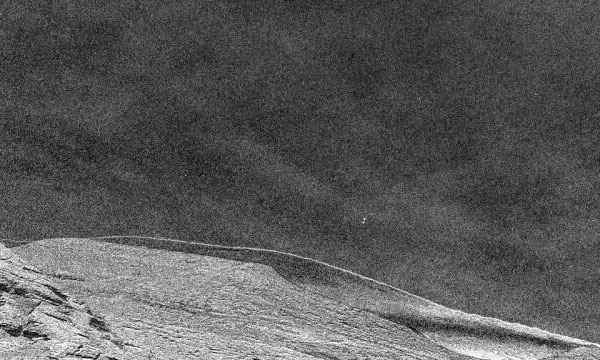NASA robot captures drifting clouds on Mars
NASA's Curiosity robot recorded passing clouds above Mount Sharp, where it was operating on Mars, to measure velocity. It's not an easy task, NASA's Jet Propulsion Laboratory (JPL) said in a February 15 announcement, because Curiosity's cameras are not designed to point skyward. Instead, they were built with the purpose of observing the rocks and Martian landscape in search of ancient traces of possible habitability.
"Mars clouds are very faint in the atmosphere, so special photography techniques are needed to observe them. Many pictures were taken to provide a clear and still background. This helps anything else move. in the frame, such as clouds or shadows, become conspicuous after excluding this static background from each individual image," explains JPL.
The clouds and their shadows on the ground were captured in two 8-frame videos on December 12, 2021, during the 3,325 Mars day of the Curiosity mission. The Martian day is slightly longer than the 24-hour cycle on Earth.

Mars clouds are very faint in the atmosphere.
Curiosity uses a double navigation camera to examine the clouds from two different angles, according to JPL. The two views allow scientists to calculate the velocity and height of clouds, thereby gathering information about their composition.
"These clouds are very high, nearly 80km above the ground. The temperature at that altitude is extremely cold. This suggests that these clouds are composed of CO2 ice, which is different from the clouds of water ice that usually occur at high altitudes. lower," said JPL.
The JPL announcement does not mention the speed of the clouds. However, the wind speed near the surface of Mars is usually 7-35km/h, which is fast enough to generate wind power on this planet.
- NASA lost contact with Mars robots for two weeks
- NASA robot captures Mars moon at an altitude of 23,458km
- NASA robot captures unusual sunset on Mars
- NASA postponed the schedule for launching robots to Mars
- NASA declares: Humans can live on Mars!
- NASA found the slab that could possibly contain life on Mars
- NASA's bee bee exploration plan
- Revealed 'explorer' will go to Mars in 2020
- More than 6.5 operations on Mars, NASA has come up with a new way to take advantage of the Curiosity robot
- Mars Express will track the Phoenix robot landed on Mars
- NASA is about to announce a new discovery about life on Mars
- NASA finally found the missing robot on Mars, but they are still not happy
 Announced 3 houses on the Moon and Mars
Announced 3 houses on the Moon and Mars Science proves: Mars also knows 'deflated'
Science proves: Mars also knows 'deflated' Elon Musk announced the price for a Mars trip was 11.6 billion VND, free of charge
Elon Musk announced the price for a Mars trip was 11.6 billion VND, free of charge NASA discovered strange 'gate' on Mars, is the hiding place found?
NASA discovered strange 'gate' on Mars, is the hiding place found?